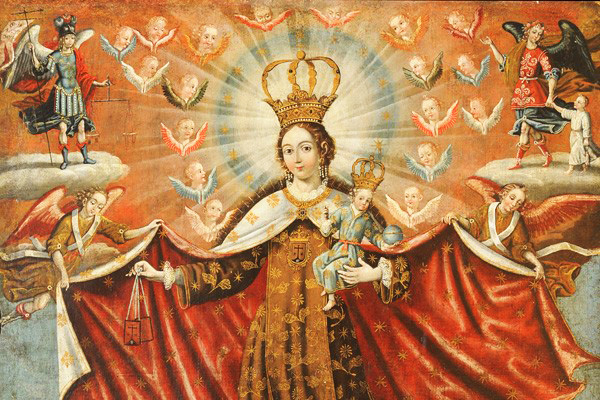
A Philadelphia Art Museum exhibition of Colonial Art — specifically, the South American colonies of Spain — spotlights an area that’s been neglected by most museums. Rather than coming from the familiar sources in Europe, these paintings, sculptures and decorative objects originated in Latin America and parts of Asia that have been unexplored by the art community.
Paintings from Cusco, Peru, and silver from Bolivia dominate the exhibition. The subject matter is almost entirely religious, representing the Catholic faith of the Spanish conquerors.
Roberta and Richard Huber, the donors of their private collection, say that the market value of everything here is less than the price of one painting by Andy Warhol. Not to diss Warhol, but that proportion seems insane. Trends ebb and wain, and eventually this colonial art should achieve its proper stature.
Even some of us who’ve been through South America have missed seeing this material. When my family and I spent a week in the Cusco area, our guide showed us the remnants of the culture that existed before the Spanish invasion. Then we traveled through the Sacred Valley between Cusco and Machu Picchu where we saw terraced settlements and native Peruvian artifacts. But he did not show us the interiors of the region’s Catholic churches.
Our guide was descended from the Incas and he spoke to us partially in Quechua, which still today is spoken by more than eight million South Americans. He displayed no animosity towards Hispanics, but clearly he had a broader view (a more catholic, with a small c, view) of his land’s history and culture.
The Hubers told me that most of the art originally was in those churches, then found its way into the hands of private dealers. Much of it was dirty, with damaged frames, and the Hubers paid for extensive restorations.
The question naturally arises, why did the churches get rid of these historical paintings?
Partly it was because of a secularization that modern Latin American states went through, during which many monasteries, convents and churches were closed. Other sanctuaries were demolished to make way for new buildings, and fresh works of art were commissioned to adorn their walls. This caused old paintings to enter the market.
The Spanish conquest of the Inca empire took place in the 16th century, and Bolivian silver became an important source of revenue for the Spanish Empire. When this artwork was created, Cusco was one of the most populous cities on earth with 200,000 inhabitants while Potosi in Bolivia was filled with wealth that derived from the area’s silver mines. (75 per cent of the world’s silver came from there.)
The Spanish occupiers celebrated their victories over the Andean natives by commissioning Catholic ceremonial objects made of silver, and vivid paintings with Catholic subjects.
My favorite pieces are Saint Michael the Archangel, which portrays the good guy sticking a spear into the bad guy and crushing the devil underfoot. The anonymous painter made opulent use of gold stenciling while he also delineated lacey textile garments and added faint small cherubs floating in the background.
And Our Lady of the Rosary which is only 28 by 32 inches but dazzling. The oil on canvas has embedded semi-precious gemstones and elaborate gold stenciling of starbursts, flowers and scrolls. It displays an astonishing amount of gold filagree per square inch, surrounded by an expansive gold-gilded frame.
Portable writing desks, cabinets and coca boxes (for storing coca leaves) are adorned with mother-of-pearl, ivory, tortoise shell and silver.
Some of the paintings show biblical characters in jungle-like landscapes that look decidedly South American rather than Holy Land or European. This illustrates two cultures in collision, melding into a combined art form.
Read other stories on The Cultural Critic